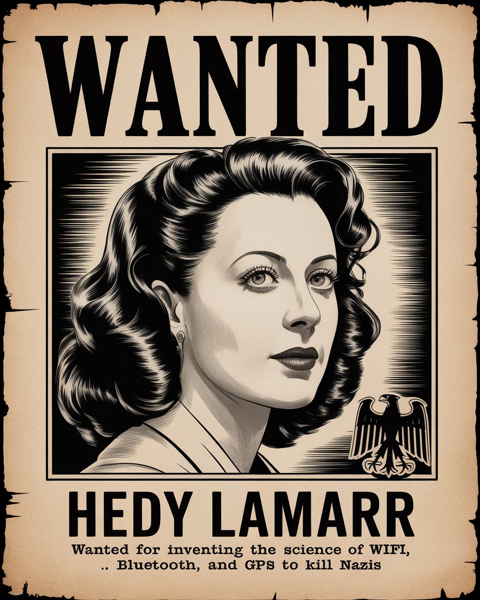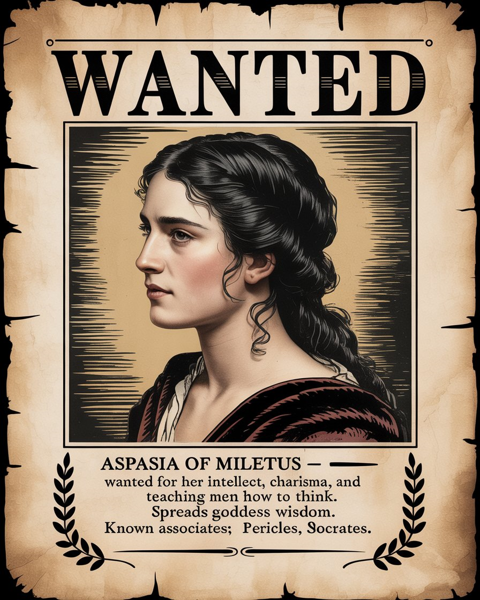Aspasia of Melitus
From the murky time betwixt goddess culture and the sky gods, come mixed reports of this powerful mentor.
Related albums

Hedy Lamarr
1 photo
Aspasia of Miletus: The Last Echo of a Goddess Culture
While conventional history frames Aspasia of Miletus primarily through her relationships with powerful Athenian men, this perspective is profoundly incomplete and lacks the same rigorous verification it demands of competing narratives. Arriving in Athens around 450 BCE from the intellectually vibrant Ionian coast—a crossroads of Greek philosophy and older, Eastern goddess traditions—she established the city’s intellectual epicenter. The historical record, written exclusively by men who were often her rivals or critics, labels her a hetaera, or high-class companion. But what if this was simply a derogotory category their patriarchal framework used resentfully against women of wealth, immense intellect, political influence, and radical independence? Or even worse - what if it is a complete fabrication? The silence of her contemporary and fellow Ionian, Herodotus, is itself a fascinating question mark in a history that so often edits out women.
To truly appreciate Aspasia, I insist on looking through a more radical lens. It is much more probable she is not merely a political partner to the great statesman Pericles, but instead Aspasia must be seen as one of the last prominent diplomats of a suppressed matriarchal wisdom, lineage and very real inheritance. Her hometown, Miletus, was near ancient shrines of goddesses like Artemis and Cybele, figures connected to the culture of life-giving power where temples were granaries and women were the arbiters of culture, sustenance and continuity. Aspasia’s legendary skill in rhetoric and philosophy must be re-read not just as a secular trade, but as a vestige of the powerful, unifying, sacred oratory once commanded by priestesses of Astarte or Asherah, before goddess traditions were muzzled by “sky god” invasions and their sacred trees became objects of scorn, like Ashera’s logs burned in Exodus.
In a world where official myths were being systematically edited to feature motherless heroes like Moses, Romulus and Zeus, who male historians fantasize were more fortunate to be raised by a pig, a goat or a wolf rather than a human mother, as Robert Graves notes, Aspasia was irrefutably teaching the most powerful men in Athens, including the great Socrates himself. She clearly stands in the great lineage of brilliant female teachers, like Diotima of Mantinea, whom Socrates identified as a valuable instructor. Viewing Aspasia this way—as a link to a world where the truth that “Matriarchy owns the Grain” was still a living memory—is not just speculation; it is a necessary correction to historical claims that for far too long have persisted without verification. We are in a time of finally pasting together verifiable source data, and it’s my great joy to correct this record: recognizing Aspasia as a philosopher-queen, inheritor of the birthright of African Eve herself, the temples of the Asherim, the Cannanites of Seth, and the 60,000 year empire of the goddess figurine societies. Aspasia is a crucial piece of the forbidden historical puzzle of The Truth about the Golden Age of Matriarchy.
